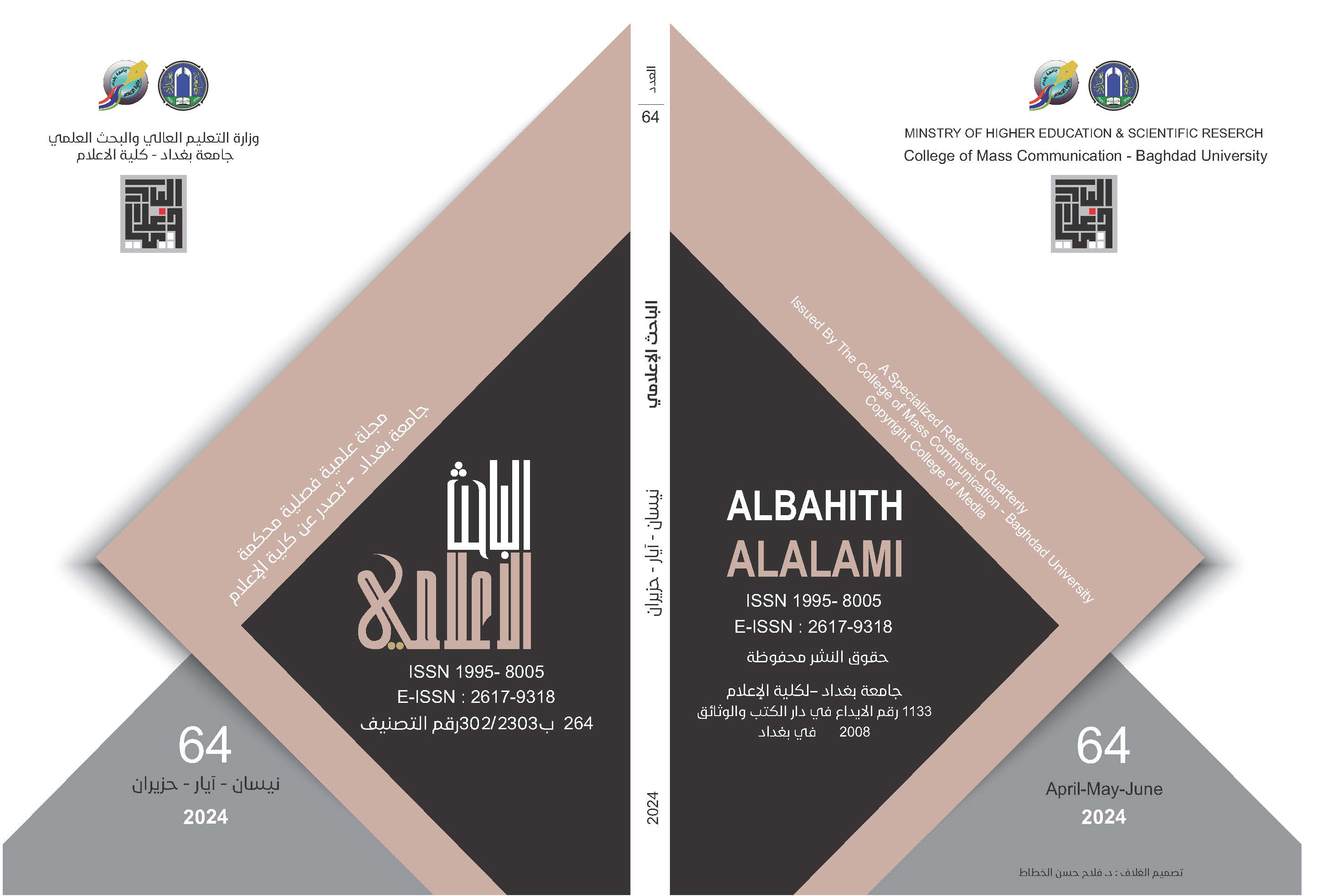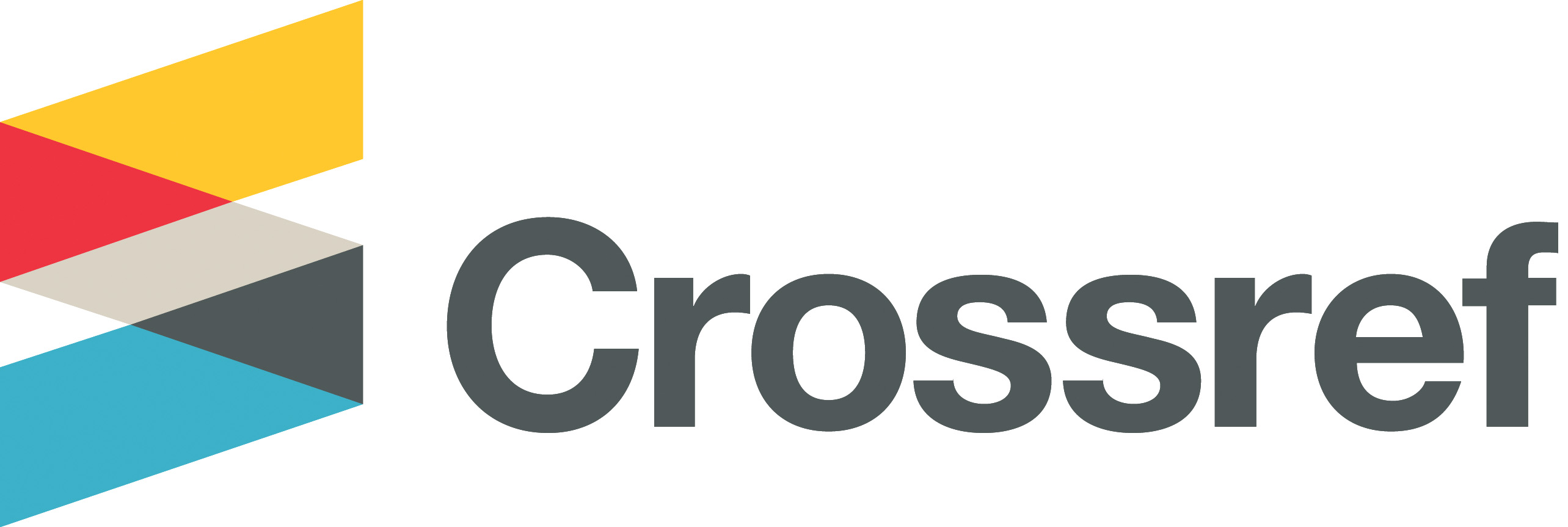The representation of Arab masculinity in advertising
A semiotic analysis
DOI:
https://doi.org/10.33282/abaa.v16i64.1208Keywords:
Gulf society, Arab masculinity, Media representations, Semiotics, ModernismAbstract
The aim of this study is to utilize Semiotic analysis to analyze the representation of Gulf men in advertising a Kuwaiti brand. Based on two YouTube commercials as a case study, this article asks, How is Arab masculinity represented in advertising? The findings indicate the existence of masculinity in flux, suggesting a subtle form of socialization and identity negotiation between foreign and local ideas, especially regarding gender relations and the representation of Arab masculinity. The analysis highlights the contrast between traditional and modern forms of masculinity, as represented by local and foreign football teams in the advertisement, suggesting that modern (or Western) forms of masculinity can be used to counteract oppressive local practices. The study argues that masculinity is not a fixed or objective concept and is instead shaped by the social and cultural context in which it exists. Here, the media's representation of masculinity is particularly influential in shaping how young people understand and internalize this idea.
Downloads
References
Aamer, M. A. F. A. (2019). Male health after forty between concepts of masculinity and masculinity, a study in biological anthropology. Journal of Scientific Research in Arts, 20(2), 565-593. https://doi.org/10.21608/jssa.2019.40709
Al-Ali, N., & Pratt, N. (2009). Gendering War and Transnationalism in the Middle East. Women and War in the Middle East. Transnational Perspectives, London, New York, 253-269.
Al-Anbaa. (2015, 7/10). “VIVA” attracts record views on YouTube during Ramadan. https://www.alanba.com.kw/ar/economy-news/571302/10-07-2015#
Al-Dailami, A.-S. (2019, September 17). Towards a new Arab Masculinity. https://bit.ly/3SvUGGd
Al Obeidli, N. (2020). Emirati women journalists bargaining with patriarchy in search of equality (Doctoral dissertation, University of Westminster). https://doi.org/10.34737/v291v
Al oraimi, S. Z. (2011). The Concept of Gender in Emirati Culture: An Analytical Study of the Role of the State in Redefining Gender and Social Roles. Museum International, 63(3-4), 78-92. https://doi.org/10.1111/muse.12009
Alhussein, E., Rafaei, D. A., & Hussein, M. A. (2021, April 1). Fashla: The Politics of Image-Making in the Gulf. https://bit.ly/4267Ixk
Allagui, I., & Al-Najjar, A. (2018). From women empowerment to nation branding: A case study from the United Arab Emirates. International Journal of Communication, 12, 68-85. https://ijoc.org/index.php/ijoc/article/view/7319
AlMutawa, R. (2019). "The mall isn't authentic!": Dubai's Creative Class And The Construction of Social Distinction. Urban Anthropology and Studies of Cultural Systems and World Economic Development, 48(1/2), 183-223. http://www.jstor.org/stable/45173363
Alsaggaf, R. M. (2019). Saudi women's identities on Facebook: Context collapse, judgement, and the imagined audience. THE ELECTRONIC JOURNAL OF INFORMATION SYSTEMS IN DEVELOPING COUNTRIES, 85(2), 1-12. https://doi.org/10.1002/isd2.12070
Alteneiji, E. (2023). Value changes in gender roles: Perspectives from three generations of Emirati women. Cogent Social Sciences, 9(1), 1-30. https://doi.org/10.1080/23311886.2023.2184899
Altohami, W. M., & Salama, A. H. (2019). The journalistic representations of Saudi women in the corpus of contemporary American English (COCA): A corpus critical discourse analysis. International Journal of English Linguistics, 9(6), 320-336. https://doi.org/10.5539/ijel.v9n6p320
Benwell, B. (2004). Ironic Discourse: Evasive Masculinity in Men’s Lifestyle Magazines. Men and Masculinities, 7(1), 3-21. https://doi.org/10.1177/1097184X03257438
Bussey, K., & Bandura, A. (1999). Social cognitive theory of gender development and differentiation. Psychological Review, 106(4), 676-713. https://doi.org/10.1037/0033-295X.106.4.676
Carter, C., Steiner, L., & McLaughlin, L. (2014). The Routledge companion to media & gender. Routledge.
Chandler, D. (2022). Semiotics: The Basics (4th ed.). Routledge. https://doi.org/10.4324/9781003155744
Cooke, M. (2014). Tribal modern: Branding new nations in the Arab Gulf. Univ of California Press.
Danesi, M. (2004). Messages, signs, and meanings: A basic textbook in semiotics and communication (3 ed.). Canadian Scholars’ Press.
Darling-Wolf, F. (2004). Women and New Men: Negotiating Masculinity in the Japanese Media. The Communication Review, 7(3), 285-303. https://doi.org/10.1080/10714420490492193
Dyer, G. (1982). Advertising as Communication. Routledge.
El Halabi, S., Founouni, Z. N., & Arawi, T. (2019). Social Construction of Arab Masculinity and Its Effects on Mental Health. In I. Laher (Ed.), Handbook of Healthcare in the Arab World (pp. 1-11). Springer International Publishing. https://doi.org/10.1007/978-3-319-74365-3_175-1
Ennis, C. A. (2019). The Gendered Complexities of Promoting Female Entrepreneurship in the Gulf. New Political Economy, 24(3), 365-384. https://doi.org/10.1080/13563467.2018.1457019
Farrell, W., & Gray, J. (2018). The boy crisis: Why our boys are struggling and what we can do about it. BenBella Books.
Fiske, J., & Hartley, J. (2004). Reading television (2 ed.). Routledge.
Ghannam, F. (2013). Live and die like a man: Gender dynamics in urban Egypt. Stanford University Press.
Ghoussoub, M., & Sinclair-Webb, E. (2000). Imagined masculinities: Male identity and culture in the modern Middle East. Saqi Books.
Gilmore, D. D. (1990). Manhood in the Making Cultural Concepts of Masculinity. Yale University Press. http://www.jstor.org/stable/j.ctt5vm2vj
Global Media Insight. (2023, August 17). YOUTUBE STATISTICS 2024 DEMOGRAPHICS, USERS BY COUNTRY & MORE https://www.globalmediainsight.com/blog/youtube-users-statistics/
Harris, I. M. (2004). Messages men hear: Constructing masculinities. Taylor & Francis.
Hasso, F. (2019). Decolonizing Middle East men and masculinities scholarship: An axiomatic approach.
Hemphill, M. (1996). A Note on Adults' Color–Emotion Associations. The Journal of Genetic Psychology, 157(3), 275-280. https://doi.org/10.1080/00221325.1996.9914865
Hust, S. J. T., & Brown, J. D. (2008). Gender, media use, and effects. In The handbook of children, media, and development. (pp. 98-120). Blackwell Publishing. https://doi.org/10.1002/9781444302752.ch5
Inhorn, M. C. (2012). The New Arab Man, Emergent Masculinities, Technologies, and Islam in the Middle East. https://doi.org/10.1515/9781400842629
Itulua-Abumere, F. (2013). Understanding Men and Masculinity in Modern Society. Open Journal of Social Science Research, 1(2). https://doi.org/10.12966/ojssr.05.05.2013
JIANG, C. (2012). MEN'S MAGAZINES AND THE CONSTRUCTION OF MASCULINITY IN TAIWAN [PHD Dissertations, Southern Illinois University Carbondale]. https://opensiuc.lib.siu.edu/dissertations/474/
Jonauskaite, D., Abu-Akel, A., Dael, N., Oberfeld, D., Abdel-Khalek, A. M., Al-Rasheed, A. S., Antonietti, J.-P., Bogushevskaya, V., Chamseddine, A., Chkonia, E., Corona, V., Fonseca-Pedrero, E., Griber, Y. A., Grimshaw, G., Hasan, A. A., Havelka, J., Hirnstein, M., Karlsson, B. S. A., Laurent, E., . . . Mohr, C. (2020). Universal Patterns in Color-Emotion Associations Are Further Shaped by Linguistic and Geographic Proximity. Psychological Science, 31(10), 1245-1260. https://doi.org/10.1177/0956797620948810
Keenan, K. L., & Yeni, S. (2003). Ramadan Advertising in Egypt: A Content Analysis With Elaboration on Select Items. Journal of Media and Religion, 2(2), 109-117. https://doi.org/10.1207/S15328415JMR0202_04
Langworthy, M., & Naguib, R. (2024). Through the Eye of the Needle: Lessons in Women’s Empowerment and Public Policy from the Arab Gulf. In R. Naguib (Ed.), Women's Empowerment and Public Policy in the Arab Gulf States: Exploring Challenges and Opportunities (pp. 147-185). Springer Nature Singapore. https://doi.org/10.1007/978-981-99-6006-4_7
Magrath, R., Cleland, J., & Anderson, E. (2020). The Palgrave Handbook of Masculinity and Sport. https://doi.org/10.1007/978-3-030-19799-5
Mahalik, J. R., Locke, B. D., Ludlow, L. H., Diemer, M. A., Scott, R. P. J., Gottfried, M., & Freitas, G. (2003). Development of the Conformity to Masculine Norms Inventory. Psychology of Men & Masculinity, 4(1), 3-25. https://doi.org/10.1037/1524-9220.4.1.3
Messerschmidt, J. W. (2015). Masculinities in the Making: From the Local to the Global. Rowman & Littlefield.
Miller, C. F. (2016). Gender Development, Theories of. In The Wiley Blackwell Encyclopedia of Gender and Sexuality Studies (pp. 1-6). https://doi.org/10.1002/9781118663219.wbegss590
Mirgani, S. (2020). Making the Final Cut: Filmmaking and Complicating National Identity in Qatar and the GCC States. In T. Ginsberg & C. Lippard (Eds.), Cinema of the Arab World: Contemporary Directions in Theory and Practice (pp. 45-70). Springer International Publishing. https://doi.org/10.1007/978-3-030-30081-4_2
Muhtaseb, A. (2020). US media darlings: Arab and Muslim women activists, exceptionalism and the “rescue narrative”. Arab Studies Quarterly, 42(1-2), 7-24. https://doi.org/10.13169/arabstudquar.42.1-2.0007
Naguib, R., & Madeeha, M. (2023). “Making visible the invisible”: Exploring the role of gender biases on the glass ceiling in Qatar's public sector. Women's Studies International Forum, 98, 102723. https://doi.org/10.1016/j.wsif.2023.102723
Osman, W., Mohamed, F., Elhassan, M., & Shoufan, A. (2022). Is YouTube a reliable source of health-related information? A systematic review. BMC Medical Education, 22(1), 382. https://doi.org/10.1186/s12909-022-03446-z
Panofsky, E. (1955). Meaning in the Visual Arts: Papers in and on Art History. University of Chicago Press.
Poulsen, S. V., & Kvåle, G. (2018). Studying social media as semiotic technology: a social semiotic multimodal framework. Social Semiotics, 28(5), 700-717. https://doi.org/10.1080/10350330.2018.1505689
Quayle, M., Lindegger, G., Brittain, K., Nabee, N., & Cole, C. (2018). Women’s Ideals for Masculinity Across Social Contexts: Patriarchal Agentic Masculinity is Valued in Work, Family, and Romance but Communal Masculinity in Friendship. Sex Roles, 78(1), 52-66. https://doi.org/10.1007/s11199-017-0772-9
Radu, M. (2011). Ford Mustang Is the Most Manly Car in the World, UK Survey Finds. Autoevolution. https://www.autoevolution.com/news/ford-mustang-is-the-most-manly-car-in-the-world-uk-survey-finds-38533.html
Rahman, M. M., & Al-Azm, A. (2023). Social Change in the Gulf Region: Multidisciplinary Perspectives. Springer Nature. https://doi.org/10.1007/978-981-19-7796-1
Rao, S., Abdul, W. K., & Kamel, Y. (2022). Empirical Investigation on the Effects of Culture on Knowledge Sharing and Organization Citizenship Behaviour: Study from UAE. Knowledge Management Research & Practice, 20(3), 381-393. https://doi.org/10.1080/14778238.2021.1895687
Reeser, T. W. (2010). Masculinities in theory: An introduction. Wiley Blackwell. https://doi.org/10.1002/9781444317312
Reeves, R. V. (2022). Of boys and men: Why the modern male is struggling, why it matters, and what to do about it. Brookings Institution Press.
Ricciardelli, R., Clow, K. A., & White, P. (2010). Investigating Hegemonic Masculinity: Portrayals of Masculinity in Men’s Lifestyle Magazines. Sex Roles, 63(1), 64-78. https://doi.org/10.1007/s11199-010-9764-8
Ridge, N. (2014). Education and the reverse gender divide in the Gulf States: Embracing the global, ignoring the local. Teachers College Press.
Schroeder, J. E., & Zwick, D. (2004). Mirrors of Masculinity: Representation and Identity in Advertising Images. Consumption Markets & Culture, 7(1), 21-52. https://doi.org/10.1080/1025386042000212383
Sebkhaoui, H. (2018). Islamic education and its role in challenging the risks of globalization. AL TURATH JOURNAL, 8(4), 694-714. https://www.asjp.cerist.dz/en/article/76355
Skalli, L. H. (2023). Introduction to Gender, Media, and Communication in MENA. In L. H. Skalli & N. Eltantawy (Eds.), The Palgrave Handbook of Gender, Media and Communication in the Middle East and North Africa (pp. 1-9). Springer International Publishing. https://doi.org/10.1007/978-3-031-11980-4_1
Tantawy, N. (2021). School Boys’ Academic Underachievement in the UAE. Academia Letters. https://doi.org/10.20935/al2227
Tlaiss, H. A. (2014). Women’s entrepreneurship, barriers and culture: insights from the United Arab Emirates. The Journal of Entrepreneurship, 23(2), 289-320. https://doi.org/10.1177/0971355714535307
Vandello, J. A., Bosson, J. K., Cohen, D., Burnaford, R. M., & Weaver, J. R. (2008). Precarious manhood. Journal of Personality and Social Psychology, 95(6), 1325-1339. https://doi.org/10.1037/a0012453
Vokey, M., Tefft, B., & Tysiaczny, C. (2013). An Analysis of Hyper-Masculinity in Magazine Advertisements. Sex Roles, 68(9), 562-576. https://doi.org/10.1007/s11199-013-0268-1
Wang, Y., & Kassam, M. (2016). Indicators of Social Change in the UAE: College Students’ Attitudes Toward Love, Marriage and Family. Journal of Arabian Studies, 6(1), 74-94. https://doi.org/10.1080/21534764.2016.1192791
Worden, E. A. (2013). Life, love, and hegemony on daytime TV: A critical analysis of three popular soap operas. The University of Southern Mississippi.
Zaatari, Z. (2015). Desirable Masculinity/Femininity and Nostalgia of the “Anti-Modern”: Bab el-Hara Television Series as a Site of Production. Sexuality & Culture, 19(1), 16-36. https://doi.org/10.1007/s12119-014-9242-5
Zayer, L. T., McGrath, M. A., & Castro-González, P. (2020). Men and masculinities in a changing world: (de)legitimizing gender ideals in advertising. European Journal of Marketing, 54(1), 238-260. https://doi.org/10.1108/EJM-07-2018-0502
Downloads
Key Dates
Received
Revised
Accepted
Published
Issue
Section
License
Copyright (c) 2024 Author

This work is licensed under a Creative Commons Attribution 4.0 International License.
Authors retain copyright and grant the journal right of first publication with the work simultaneously licensed under a Creative Commons Attribution License (CC BY 4.0) that allows sharing the work with recognition of authorship and initial publication in ABBA journal.


















